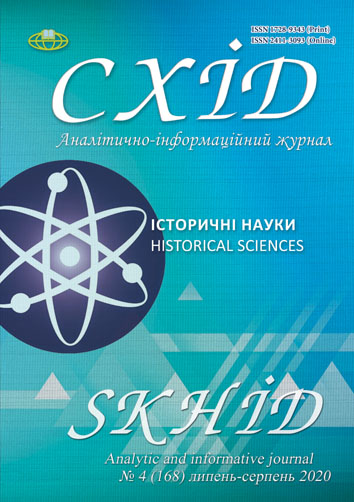Legislative basis of the US Department of State: a historical background
DOI:
https://doi.org/10.21847/1728-9343.2020.4(168).210836Keywords:
USA, State Department, legislation, foreign service, Rogers ActAbstract
The article is devoted to the analysis of the formation of the legal framework that enabled the existence and functioning of the State Department of the United States of America as the main body in conducting the country's foreign policy. The author emphasizes that certain historical conditions in which America found itself in different periods of its existence became a challenge for the continued existence of the State Department and the entire diplomatic service, and therefore the question of modernizing the US diplomatic service and transferring it to another was constantly on the agenda, a qualitatively new level. That is why, since the gradual departure from the idea of isolationism, American ruling circles have tried to "build" a diplomatic service that has all the hallmarks of flexibility, professionalism, and democracy. The author notes that the direct basis for the existence of foreign service is the US Constitution, although it does not fully answer the question of foreign policy by the US State Department, although it outlines the role of the US President in foreign policy. In general, the author emphasizes the changes in the status of the State Department and the diplomatic service, which were introduced by relevant legislation (Rogers Act of 1924, the Foreign Service Act of 1946 and 1980, etc.), the need for which was caused by certain historical conditions of existence of the American state and its place on the world stage.Downloads
References
Biographies of the Secretaries of State: Charles Evans Hughes (1862-1948). Retrived from: https://history.state.gov/departmenthistory/people/hughes-charles-evans .
Biographies of the Secretaries of State: Cyrus Roberts Vance (1917-2002). Retrived from: https://history.state.gov/departmenthistory/people/vance-cyrus-roberts
Biographies of the Secretaries of State: Henry A. (Heinz Alfred) Kissinger (1923-). Retrived from: https://history.state.gov/departmenthistory/people/kissinger-henry-a
Biographies of the Secretaries of State: Robert Lansing (1864-1928). Retrived from: https://history.state.gov/departmenthistory/people/lansing-robert
Campbell, J.F. (1971). The Foreign Affairs Fudge Factory. N.Y.: Basic Books, Inc. Publishers.
Chetverikov, S. B. (1974). Who and how does US policy. Moscow: International Relations. (In Russian).
Clinton, H.R. (2014). Hard Choices: A Memoir. New-York: Simon & Schuster.
Don, Philpott. (2015). Understanding the Department of State. Bernan Press.
Estes, T., Lightner, E. (1976). The Department of States. N.Y.
Ivanyan, E.A. (1975). The White House: presidents and policy. Moscow: Political literature press. 347 p. (In Russian).
Kengor, P. (2000). The Vice President, Secretary of State, and Foreign Policy. Political Science Quarterly, 115(2), 175-199. doi: https://doi.org/10.2307/2657899
Lobanov, S.I. (1982). “Foggy bottom” today in USA. Economy, Politics, Ideology, 7, 117 - 123. (In Russian).
McCoy, D. R. (1982). The Presidency of Harry S. Truman. Lawrence: University Press of Kansas,
The Constitution of the United States. Retrived from: https://constitutionus.com/ .
Walker, R. (1965). The American Secretaries of State and their diplomacy. New York: Cooper Square Publishers.
Willian, S. (2010). White. Majesty and Mischief. N.Y.: Kessinger Publishing, LLC.
Yilson, D. (1995). American government. Moscow: Publishing group Progress. 512 p. (In Russian).
Yunglyud, V. (1996). The last Secretary of State of the Franklin Roosevelt era in USA. Economy, Politics, Ideology, 9, 75 - 85. (In Russian).
Downloads
Published
How to Cite
Issue
Section
License
Copyright (c) 2020 Tetiana Klynina

This work is licensed under a Creative Commons Attribution-NonCommercial-NoDerivatives 4.0 International License.
1. Authors bear responsibility for the accuracy of facts, quotations, numbers and names used.
2. Manuscripts are not sent back.
3. The publisher does not always agree with the authors' opinion.
4. The authors reserve the right to authorship of the work and pass the first publication right of this work to the journal under the terms of a Creative Commons Attribution-NonCommercial-NoDerivatives 4.0 International License. This license allows others to distribute (copy) the published work for non-commercial purposes, provided there is mandatory attribution to its authors and a link to the first publication in our journal.
5. The authors have the right to conclude separate supplement agreements that relate to non-exclusive work distribution in the form in which it has been published by the journal (for example, to upload the work to the online storage of the journal or publish it as part of a monograph), provided that the reference to the first publication of the work in this journal is included.

